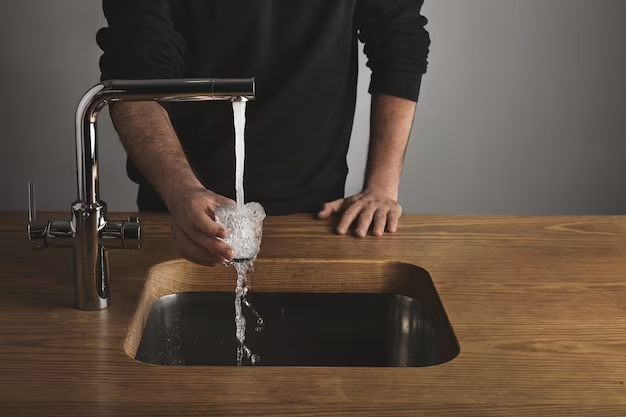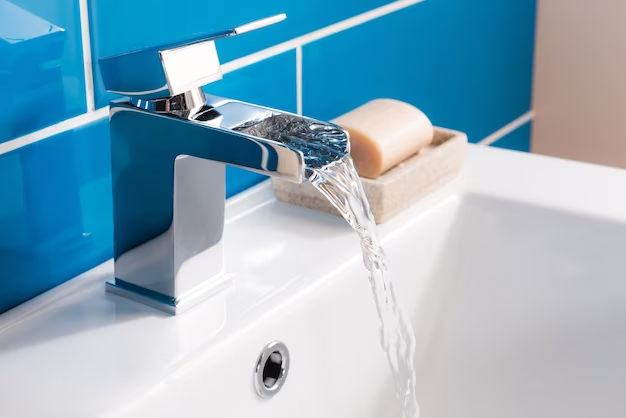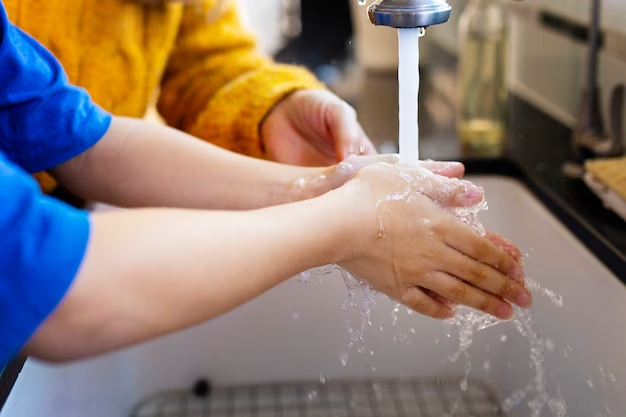Tap runs for a few seconds after turning off
What is a Tap Running for a Few Seconds After Turning Off?
Have you ever noticed that your kitchen or bathroom faucet continues to run for a few seconds after you turn it off? This phenomenon is known as tap running. Although it may seem like a small issue, it can actually have some significant implications for your plumbing system and water bills.

Tap running occurs because the water flowing through the pipes and faucet does not stop immediately when the handle is turned. There is still some residual water left in the pipes and spout, and this water continues to flow out for a few seconds after the tap is turned off. This is completely normal and happens in all types of faucets, including ball type, cartridge, and compression.
However, tap running can be problematic if it continues for an extended period of time. It can lead to wasted water, which can increase your water bills and put a strain on your plumbing system. Additionally, tap running can contribute to the buildup of mineral deposits and other debris in the faucet and pipes, which can cause clogs and other plumbing issues.
Overall, tap running is a common occurrence that is not necessarily problematic in small amounts. However, if you notice that your faucet continues to run for an extended period after turning it off, it may be time to take steps to prevent wasted water and potential plumbing issues. With a little bit of maintenance and care, you can keep your faucet flowing smoothly and prevent tap running from becoming a significant issue.
Causes of the Problem
Tap running after turning off can be caused by various factors that affect the plumbing system and faucet. Here are some common causes of the problem:
1. Mineral deposits: Over time, minerals such as calcium and magnesium can build up inside the faucet and pipes, causing clogs and reducing water flow. This can also contribute to tap running as the residual water is slowed down by the mineral buildup.
2. Worn-out components: Parts such as rubber washers, plastic components, and brass pieces inside the faucet can wear out over time. When this happens, they may not be able to create a tight seal when the faucet is turned off, leading to tap running.
3. High water pressure: A water pressure control switch that is not set correctly or high water pressure from the building’s water supply piping can cause more water to flow through the pipes than necessary. This can result in longer tap running after the faucet is turned off.
4. Malfunctioning water heater: If the hot water tank or heating element in the water heater is not functioning correctly, the faucet may dispense hot water for an extended period after the handle is turned off.
5. Type of faucet: Some types of faucets, such as ball-type faucets, may be more prone to tap running due to their design.
6. Clogged water filter: A clogged clean water filter or water tank bladder can restrict water flow and cause tap running.
It’s essential to address the causes of tap running promptly to prevent water waste, plumbing problems, and higher water bills. Regular maintenance, such as cleaning and replacing worn-out components, can help prevent tap running. In cases where the problem persists, it may be necessary to contact a professional plumber for assistance.
Types of Faucets
Faucets come in a variety of styles and designs, each with its own unique features and advantages. Choosing the right type of faucet for your needs can not only improve the functionality of your sink or shower but also add to the aesthetic appeal of your space. Here are some of the most common types of faucets:

1. Cartridge Faucets: These faucets are typically found in bathroom sinks and have a single handle to control the water temperature and flow. They use a cartridge to regulate the water flow and can be easily repaired or replaced if necessary.
2. Ball Faucets: These are commonly found in kitchen sinks and have a ball-shaped joint inside the faucet body that controls the water flow. While durable and long-lasting, these faucets can be more complicated to repair if a problem arises.
3. Compression Faucets: These faucets have separate hot and cold handles and require tight twisting or compression to turn the water on and off. They are among the most traditional faucet types but can be prone to leaks and require more maintenance.
4. Disc Faucets: These faucets use a flat disc that controls the water flow and temperature. They are durable and long-lasting, with fewer parts that can wear out than other faucet types.
5. Sensor-Activated Faucets: These faucets use motion sensors to turn the water on and off, making them a popular choice in commercial settings such as public restrooms. They are also becoming more common in residential settings due to their convenience and water-saving features.
No matter what type of faucet you choose, proper maintenance and care can help it last longer and function more efficiently. Regular cleaning and maintenance can prevent mineral buildup and other issues that can lead to tap running or other problems. With the wide range of faucet types available, you’re sure to find one that suits your practical and aesthetic needs.
Compression Faucets
When it comes to traditional faucet types, compression faucets are certainly among the most popular. These types of faucets are widely used in homes, restaurants, and other establishments where reliable water flow and control are important. They are known for their separate hot and cold handles and the need to twist them tightly to turn the water on and off.
One of the advantages of compression faucets is their simplicity and durability. Because they have relatively few parts, there is less that can go wrong with them, meaning that they can last for many years if properly maintained. Additionally, their design is such that they can be easily disassembled and repaired, which can save homeowners a significant amount of money compared to having to replace an entire faucet.
Overall, compression faucets are a reliable and cost-effective choice for many homeowners and businesses. With proper maintenance and attention to detail, they can provide reliable water flow for years to come. However, users should also be aware of their limitations and the need for regular maintenance to keep them working properly.
Identifying the Cause of the Problem
When it comes to tap runs for a few seconds after turning off, it’s essential to identify the root cause of the issue. Many factors can contribute to faucet drips, leaks, or water running for a few seconds after shutting them off. Identifying the underlying problem is the first step towards finding a suitable solution and preventing further damage to your plumbing system.
One of the most common causes of tap runs is worn washers. The constant opening and closing of the faucet’s valve can cause the washer to wear out over time. When this happens, water could continue to run even when you’ve turned off the faucet. It is usually a simple fix that requires replacing the worn-out washer with a new one.
In conclusion, the tap runs issue is a common problem that can have several underlying causes. Identifying the root cause of the problem is the first step towards finding a suitable solution. If the issue is beyond your DIY skills, seek the services of a professional plumber to fix the problem before it escalates into a more significant issue.
Clogged or Worn Washers
Clogged or worn washers are common problems that can result in faucet drips, leaks, and even completely blocked water flow. These issues can be frustrating and inconvenient for homeowners, and if not fixed promptly, they can result in more severe plumbing problems.

Clogged washers usually occur due to the accumulation of mineral deposits or debris inside the faucet’s valve. To solve this problem, you’ll need to remove the faucet handle and the valve stem, which houses the washer. Once you have access to the washer, give it a thorough clean using an old toothbrush and vinegar or lime juice. If the washer is severely clogged, you may need to soak it in vinegar or use a cleaning solution recommended by a plumbing professional.
In conclusion, clogged or worn washers are common problems that homeowners face with their faucets. While they may seem like minor issues, ignoring them can result in more significant plumbing problems. Address them promptly by cleaning or replacing the washer, and consider seeking professional plumbing assistance if you encounter any difficulties with repairs. With this approach, your faucets will function correctly, saving you money and preventing additional plumbing damage.
Meet Lila Robinson, an expert in the world of plumbing with a talent for delivering valuable insights and captivating articles on an array of plumbing topics. With years of experience handling complicated plumbing issues, Lila has become a go-to resource for homeowners and businesses alike.
Packing vast knowledge in plumbing tools and science, Lila creates a sense of community on her blog and social media accounts, engaging with readers from all walks of life. Her writing style is authentic, unique, and engaging, and she has an exceptional ability to break complex concepts into understandable ideas.
If you have encountered a plumbing issue, chances are Lila Robinson has conquered it. Her articles uncover the underlying problems behind some of the most unexpected plumbing problems, from tankless water heater error codes to drain snakes in vents.
Whether you’re a beginner or an experienced plumber, Lila Robinson’s blog has something for you. Follow her social media accounts to keep up-to-date with the latest posts and join the conversation.